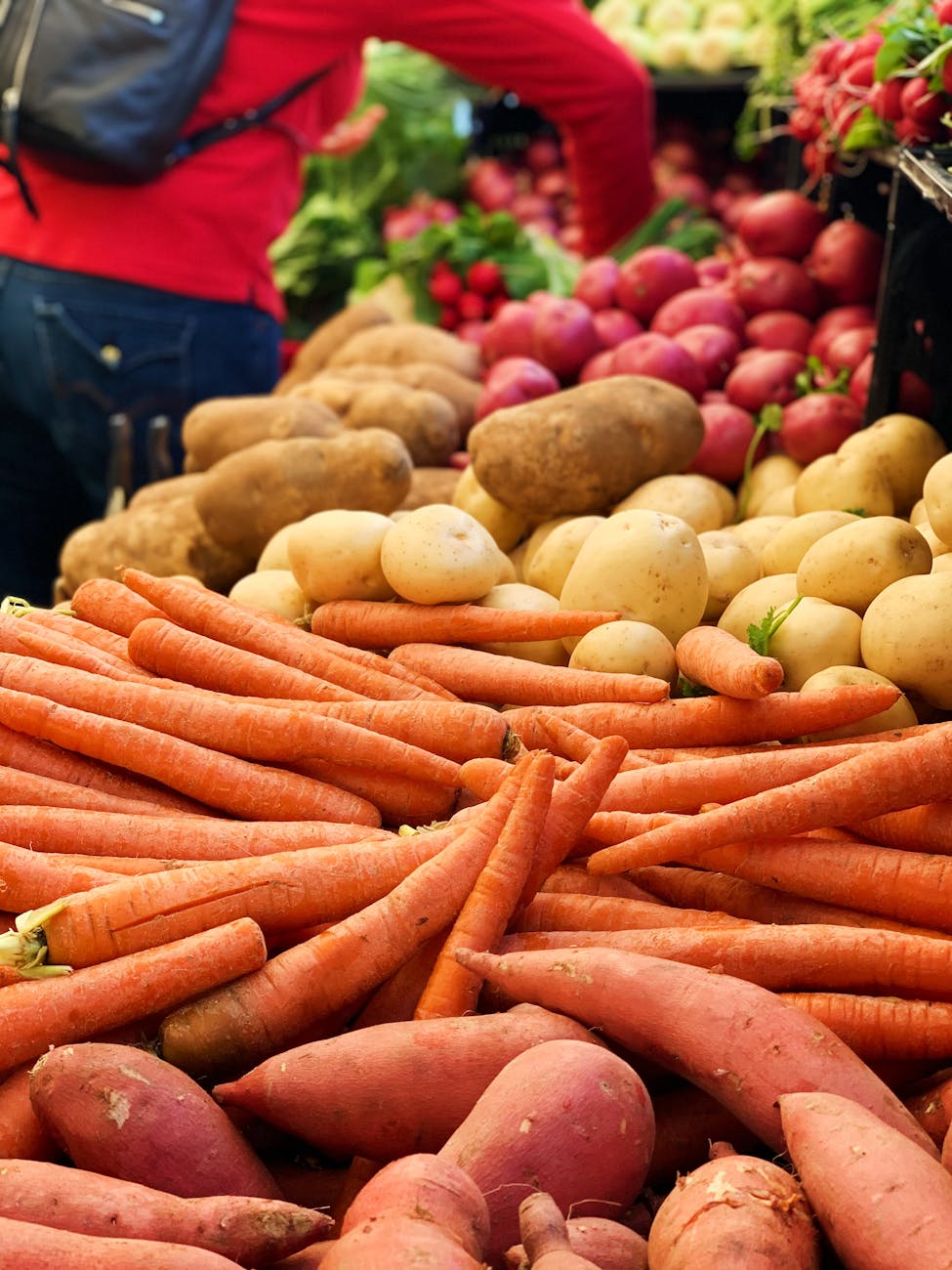Welcome to this hall on the Title: Root crops to grow and when to Plant them.
Learn the top 10 root crops to grow and the best times to plant them for a successful harvest. From carrots and potatoes to garlic and sweet potatoes, get expert tips on when and how to plant each crop for optimal growth.
Introduction
When it comes to sustainable gardening, root crops are among the most rewarding and versatile plants to grow. These underground vegetables are nutrient-rich, store well, and thrive in various climates. Whether you’re new to gardening or a seasoned pro, knowing the best root crops to plant and the right planting times is crucial to a successful harvest.
In this hall, we’ll study the top 10 root crops you can grow and provide detailed information on when to plant them for optimal growth.

See Also
- How to grow onions – guide for Onion Farming
- How to grow potatoes- a complete guide
- List of vegetables to Grow in your garden.
1. Carrots
Planting Time: Early spring and late summer
Why Grow Carrots: Carrots are rich in vitamins and are versatile in the kitchen. They grow best in loose, well-drained soil.
- Best Time to Plant: Carrots thrive in cooler temperatures, so plant seeds in early spring for a summer harvest or in late summer for a fall harvest. The ideal soil temperature for germination is around 60-70°F (15-21°C).
2. Beets
Planting Time: Early spring and late summer
Why Grow Beets: Beets are easy to grow and provide both root vegetables and edible greens. They’re high in fiber and folate.
Best Time to Plant: Beets prefer cool weather. You can plant them as soon as the soil can be worked in the spring or later in the summer for a fall crop.
3. Radishes
Planting Time: Early spring or fall
Why Grow Radishes: Radishes are one of the fastest-growing root crops, maturing in just 3-4 weeks. They add a spicy, crisp flavor to salads and dishes.
Best Time to Plant: Plant radishes in early spring for a quick crop or in late summer for a fall harvest. Radishes prefer cool temperatures around 55-70°F (13-21°C).
4. Turnips
Planting Time: Early spring and late summer
Why Grow Turnips: Turnips are dual-purpose vegetables, providing edible roots and greens. They’re great in soups, stews, or roasted as a side dish.
Best Time to Plant: Turnips can be planted in early spring for a summer crop or late summer for a fall harvest. They grow best when temperatures are between 50-70°F (10-21°C).
5. Parsnips
Planting Time: Spring
Why Grow Parsnips: Parsnips have a sweet, nutty flavor that improves after exposure to frost. They’re excellent roasted or added to soups and stews.
Best Time to Plant: Plant parsnips in early spring as they need a long growing season. Harvest after the first frost to enhance their sweetness.
6. Sweet Potatoes
Planting Time: Late spring to early summer
Why Grow Sweet Potatoes: Sweet potatoes are packed with vitamins and fiber. They’re perfect for growing in warm climates and are an excellent source of beta-carotene.
Best Time to Plant: Sweet potatoes need warm soil, so plant them after the last frost when the soil temperature has reached 70°F (21°C). They require a long, hot growing season.
7. Potatoes
Planting Time: Early spring
Why Grow Potatoes: Potatoes are a staple crop that can be used in countless recipes. They store well for months if kept in a cool, dark place.
Best Time to Plant: Potatoes should be planted in early spring, as soon as the soil is workable. They prefer temperatures between 60-70°F (15-21°C) for optimal growth.
8. Garlic
Planting Time:Fall
Why Grow garlic? Garlic adds flavor to almost any dish and offers numerous health benefits. It’s a low-maintenance crop that can yield a large harvest.
Best Time to Plant: Garlic is typically planted in the fall, allowing the cloves to establish roots before the cold weather hits. It will be ready to harvest by mid-summer.
9. Onions
Planting Time: Early spring
Why Grow Onions: Onions are essential in many dishes and can be grown from seeds, sets, or transplants. They store well and can be used fresh or dried.
Best Time to Plant: Onions thrive in cooler weather, so plant them in early spring. Some varieties are also suitable for fall planting, depending on your region.
10. Rutabagas
Planting Time: Mid-summer
Why Grow Rutabagas: Rutabagas are a nutritious and versatile root crop. They store well for long periods and can be roasted, mashed, or added to soups.
Best Time to Plant: Plant rutabagas in mid-summer for a fall harvest. Like other root crops, they develop their best flavor when grown in cooler weather.
Conclusion on the best Practices for Growing Root Crops
Root crops are generally easy to grow, but they do have some specific needs. Most prefer well-drained, loose soil to allow their roots to expand freely. Keep the soil consistently moist but not waterlogged, and avoid excessive nitrogen fertilization, which can cause lush tops with small roots.
Pro Tip: Always mulch your root crops, especially in summer, to conserve soil moisture and keep the ground cool. Mulching also helps prevent weeds from competing for nutrients.
With the right planting times and a bit of care, you’ll enjoy a bountiful harvest of delicious and nutritious root vegetables throughout the growing season!
By following this guide, you’ll ensure the best planting times for each root crop, optimizing your chances for a plentiful harvest. If you want to start your garden strong, now’s the perfect time to plan your planting schedule!.
